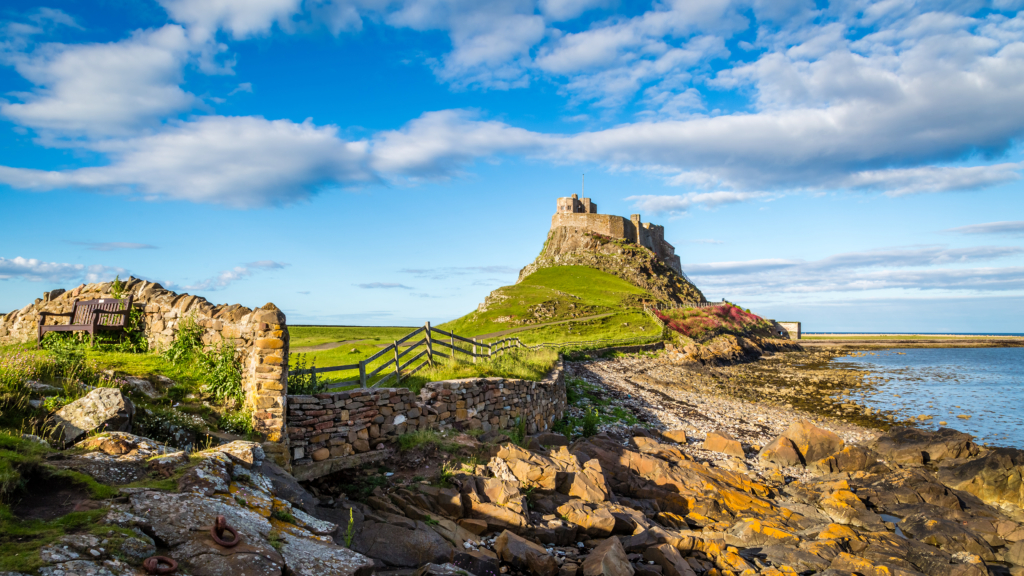
Holy Island off the Northumberland coast – the finishing point for both St Cuthbert’s Way and St Oswald’s Way (photo credit: Shutterstock)
THESE PILGRIMAGE WALKS REFLECT THE SUPERB LANDSCAPE AND RICH HISTORY OF THE UK
In 1538 Henry VIII and his chief minister Thomas Cromwell (of Wolf Hall fame!) banned pilgrimages as part of the English Reformation. The good news is that pilgrimage trails have made a comeback over recent years. Many of these pass through stunning landscapes and fascinating historical locations, including National Parks, Areas of Outstanding Natural Beauty, and UNESCO World Heritage Sites.
Pilgrimage walks are for those of all faiths and of none. There is something compelling about walking from place to place, seeing parts of the country that you would not normally visit. And the health benefits of walking, both physical and psychological, are widely recognised. Pilgrimage walks truly are journeys for both “body and soul”.
As a specialist tour operator, Walk With Williams can organise self-guided walking holidays including B&B accommodation along the majority of these routes. You will generally walk between 10 to 12 miles per day (16km to 19km). If you are new to long-distance walking, one of the shorter routes over 3 to 4 days would make sense. To make life easier, luggage transfer can be arranged on most routes between each night’s B&B. Some of these walks can also be offered on a dog-friendly basis, allowing you to be accompanied by your furry friend! Learn more about our range of pilgrimage walks in the UK or call on 07710 291518 Therefore, whether you wish to follow in the footsteps of a saint or simply experience some of the best scenery that the UK has to offer, we have listed here a selection of 15 fabulous UK pilgrimage walks that you might wish to consider.
St Cuthbert’s Way
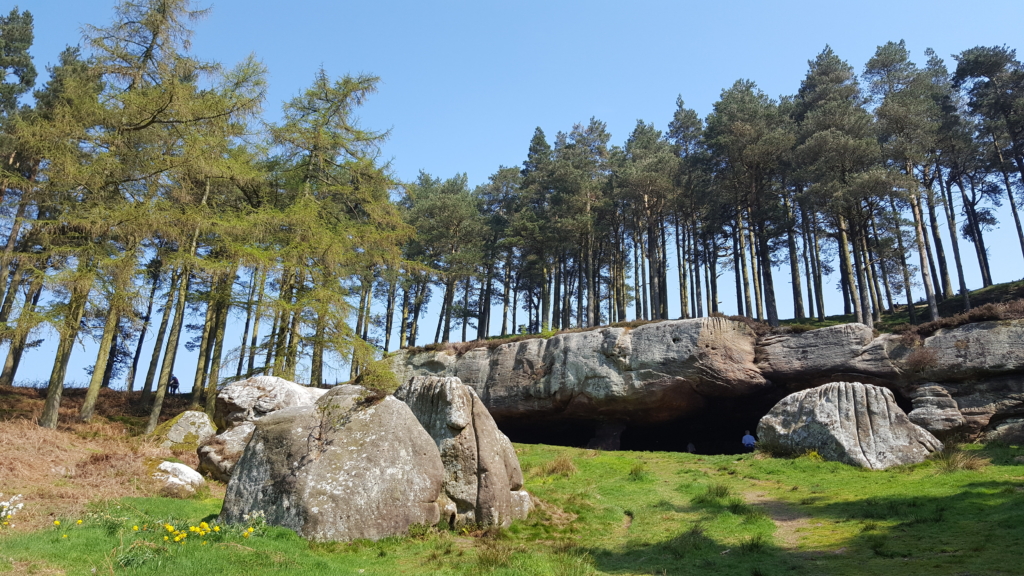
St Cuthbert’s Cave, Northumberland (photo credit: Author)
St Cuthbert’s Way was opened as a long-distance walking route in 1996 and runs for 62 miles (100km) from Melrose in the Scottish Borders to Lindisfarne (Holy Island) off the coast of Northumberland. It is also one of Scotland’s Great Trails. The walk is named after Cuthbert, a 7th century saint who spent his life in the borders. This is a beautiful and varied walk which links places that were significant to Cuthbert such as the abbeys at Melrose and Lindisfarne, and the evocative St Cuthbert’s Cave. This pilgrimage route is of moderate difficulty (occasionally challenging) and can be completed over 5, 6 or 7 days. Learn more about walking St. Cuthbert’s Way
Cornish Saints Way
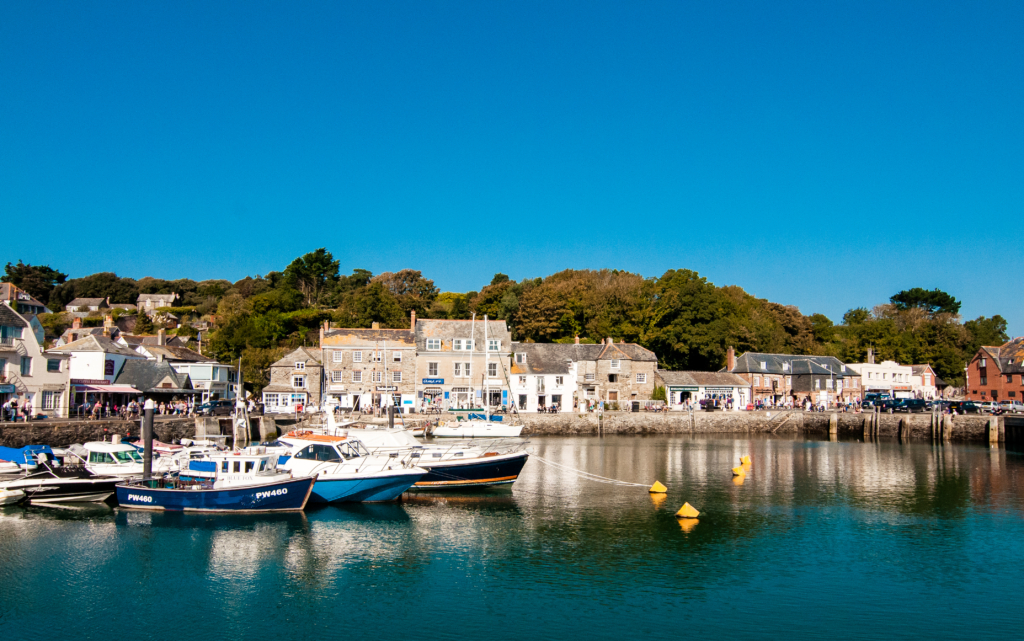
The Cornish Saints’ Way was opened as a dedicated footpath in 1986. It follows the route taken by people travelling between Ireland and the Continent who wished to avoid the hazardous sea voyage around Land’s End. It was also the route for monks from Ireland and Wales who came to spread the Christian message in Cornwall. The walk is 27 miles (43km) long and runs from Padstow to Fowey. The Saint’s Way is a beautiful walk encompassing river estuaries, moors, rolling countryside, and the granite hill of Helman Tor. This walk is of moderate difficulty and can be completed over 2 or 3 days.
St Bega’s Way
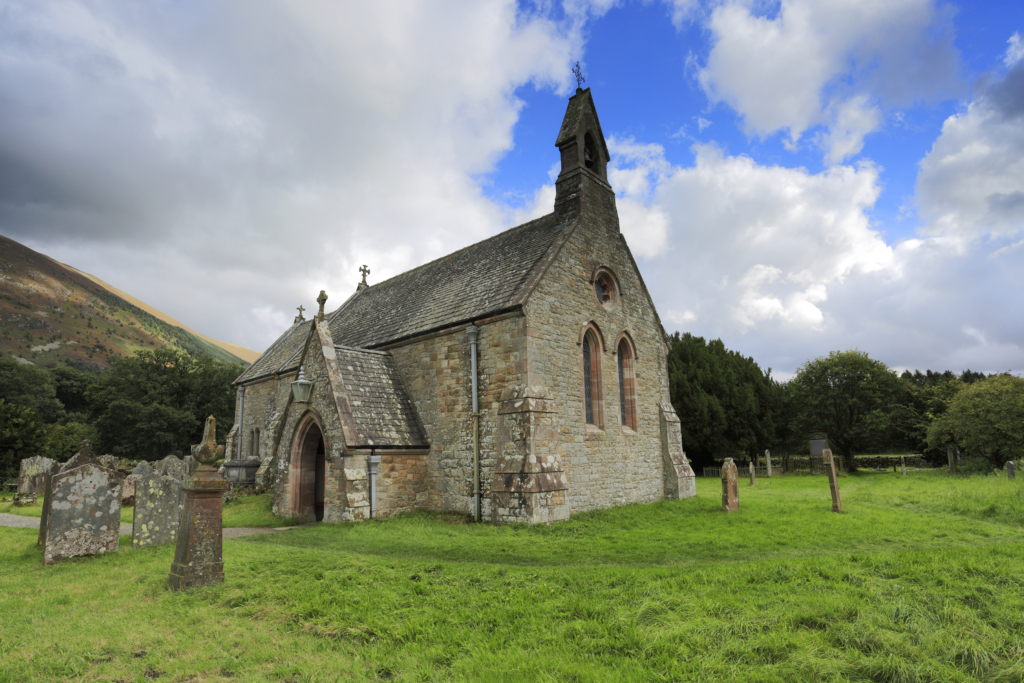
St Bega was an Irish Princess who lived in West Cumbria during the Dark Ages. St Bega’s Way is a 36-mile (58km) walk from St Bees Priory to St Bega’s Church near Bassenthwaite Lake in the Lake District. This pilgrimage route is the creation of Rosalinde Downing who described the walk in a booklet published in 2008. St Bees is on the West Cumbrian coast and is also the starting point from Alfred’s Wainwright’s famous Coast to Coast Path. St Bega’s Way passes through countryside, woodland, alongside lakes, and across moors. This walk is of moderate difficulty (occasionally challenging) and can be completed over 3 days.
St Oswald’s Way
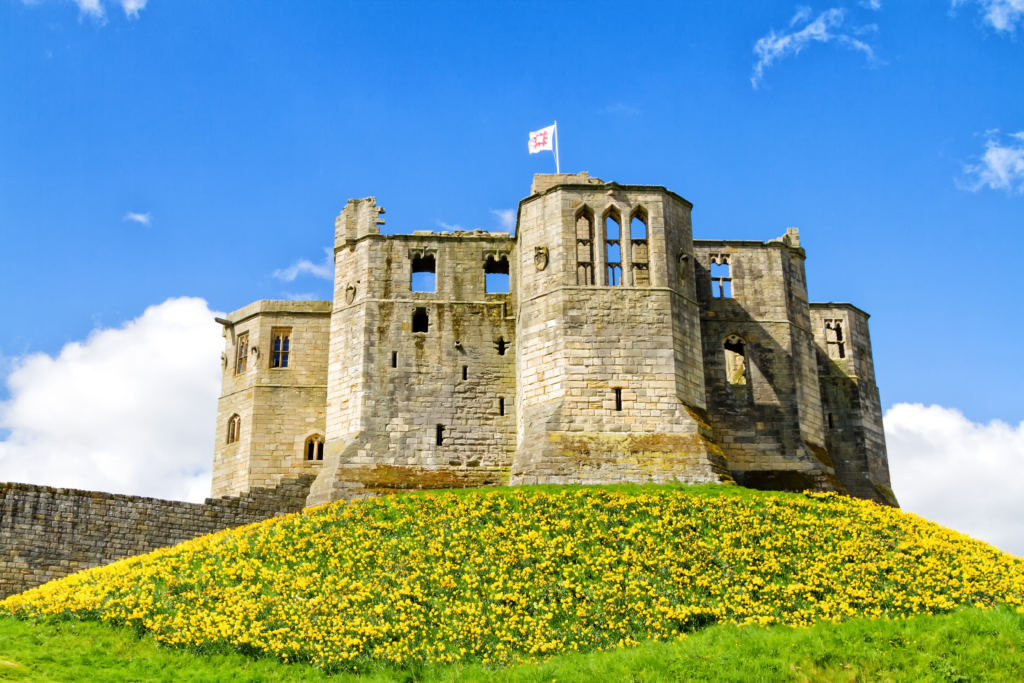
St Oswald’s Way starts at Heavenfield on Hadrian’s Wall and finishes at Lindisfarne. It is 97 miles (156km) long. The path was launched in 2006 and links many of the places linked to St Oswald, King of Northumbria in the early 7th century. The scenery is varied, with castles, coastline, islands, river valleys, hills, forest, moors, and farmland. The castles include Warkworth (home of Henry Percy, nicknamed Hotspur and made famous by Shakespeare), Dunstanburgh, and Bamburgh (once capital of the ancient kingdom of Northumbria). Much of the walk is situated within the Northumberland National Park. This pilgrimage is of moderate difficulty and can be completed over 7 or 8 days. Learn more about walking St Oswald’s Way
Great Stones Way

The Great Stones Way is a prehistoric pilgrimage across the Wiltshire Downs from Barbury Castle to Old Sarum, taking in the UNESCO World Heritage Sites of the Avebury and Stonehenge. The walk is 36-miles (58km), although can be extended from Swindon to Salisbury making for a total of 53 miles (85km). This a true pilgrimage for devotees of all things prehistoric, taking in Iron Age forts, chalk horses, stone circles, and the artificial chalk mound of Silbury Hill near Avebury. The 36-mile walk is of moderate difficulty and can be completed over 3 days, with the 53-mile version taking 4 or 5 days.
St Hilda’s Way
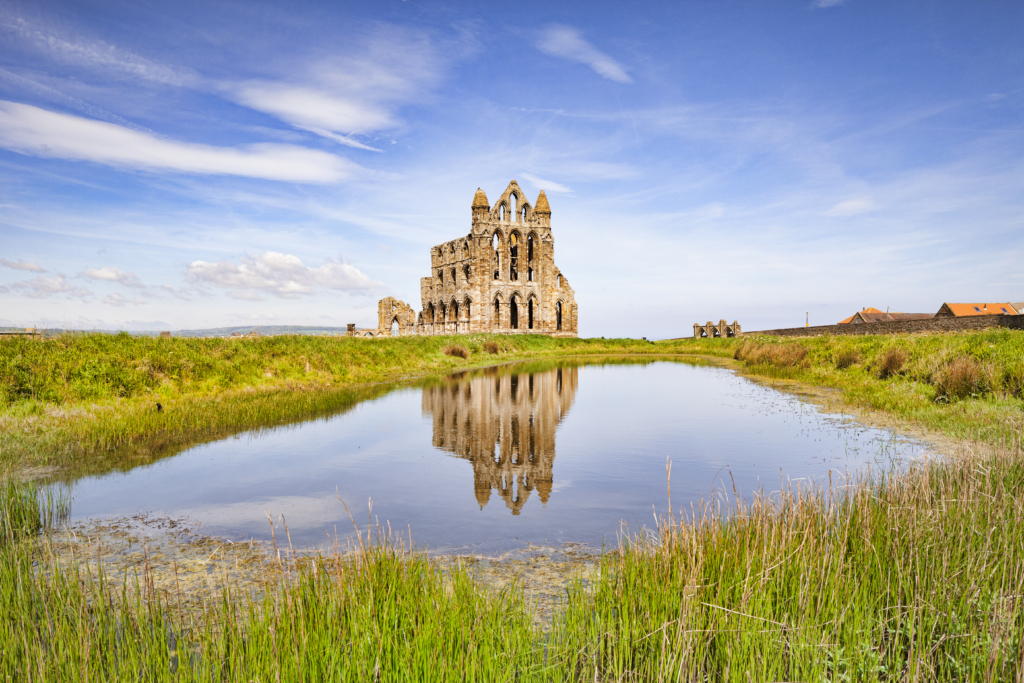
St Hilda’s Way was launched as a pilgrimage route in 2015. This 40-mile (64km) walk links a number of churches dedicated and linked to St Hilda. She lived in the 7th century and was the first Abbess of Whitby Abbey. The walk starts at Hinderwell Church, just inland from Staithes on the stunning North Yorkshire coast. The path then passes across the North York Moors National Park before looping round to the Esk Valley and finishing at Whitby Abbey. This walk is of moderate difficulty and can be completed over 3 or 4 days.
St Peter’s Way
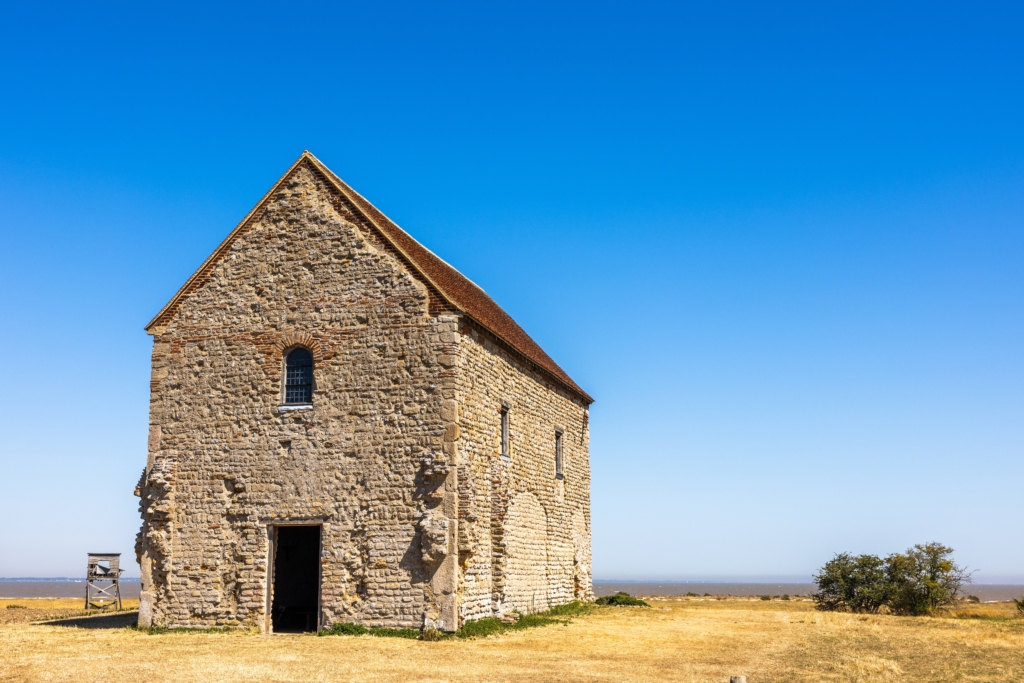
This pilgrimage route through Essex was first devised by members of the Ramblers Association in 1970. It starts in Chipping Ongar and follows a 45-mile (72km) path to the Chapel of St Peter-on-the-Wall at Bradwell on Sea. The name of the Chapel refers to the wall upon which it was built forming part of the ancient Roman fort of Othona. This walk has a varied landscape including picturesque villages, farmland, ancient woodland, commons, saltmarshes and coastline. The going is easy, and this walk can be completed over 4 days.
The John Schorne Peregrination
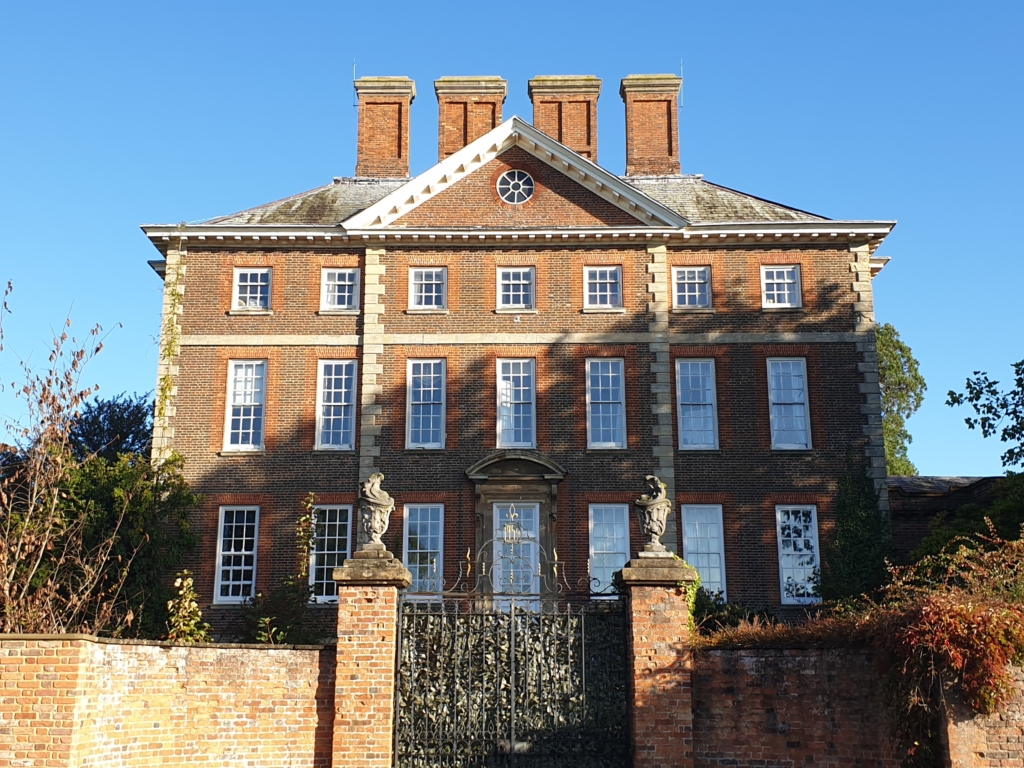
The John Schorne Peregrination is a circular walk of 27 miles (43km) around the north Buckinghamshire countryside. It was conceived by Michael Mooney who has described it in a guidebook published by The John Merrill Foundation. John Schorne was the rector of North Marston in the Middle Ages where he allegedly performed a number of miracles, including conjuring the devil into a boot. His shrine in North Marston became one of the most popular pilgrimage destinations, being visited twice by Henry VIII in the 16th century. The going is easy, and this walk can be completed over 2 to 3 days.
St Kenelm’s Way
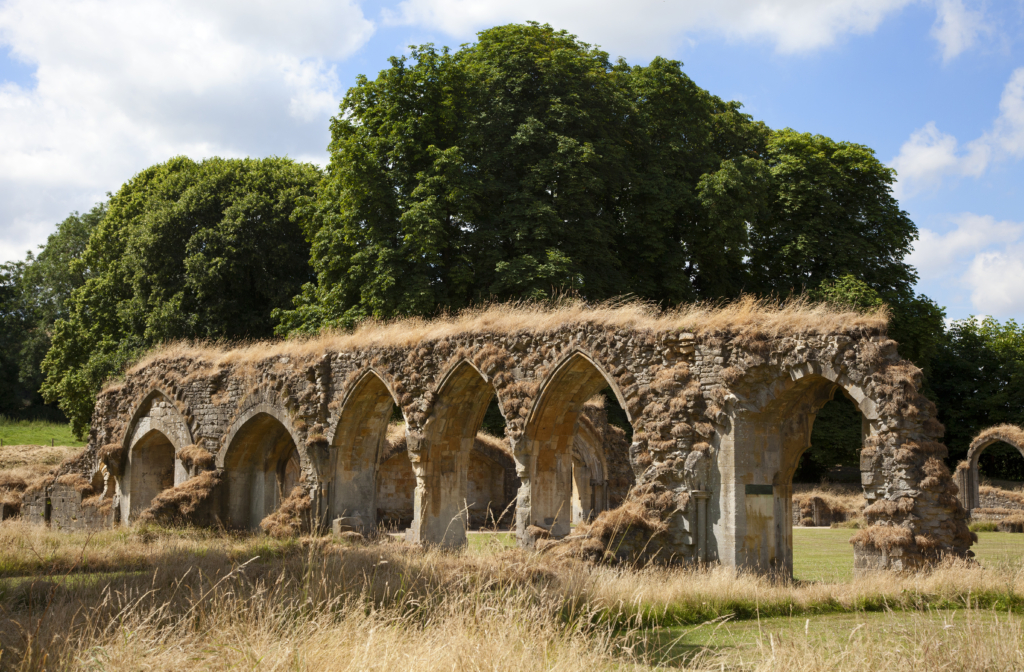
Kenelm was a prince of the Saxon Kingdom of Mercia, murdered on the orders of his jealous sister. His body was hidden in the Clent Hills. Following divine intervention, the remains of his body were discovered. This 60-mile (97km) pilgrimage route follows the final journey of Kenelm from the Clent Hills in Worcestershire to the now-disappeared Winchcombe Abbey in Gloucestershire. St Kenelm is mentioned in Geoffrey Chaucer’s Canterbury Tales (The Nun’s Priest Tale). This walk is of moderate difficulty and can be completed over 5 days.
Hope Pilgrimage
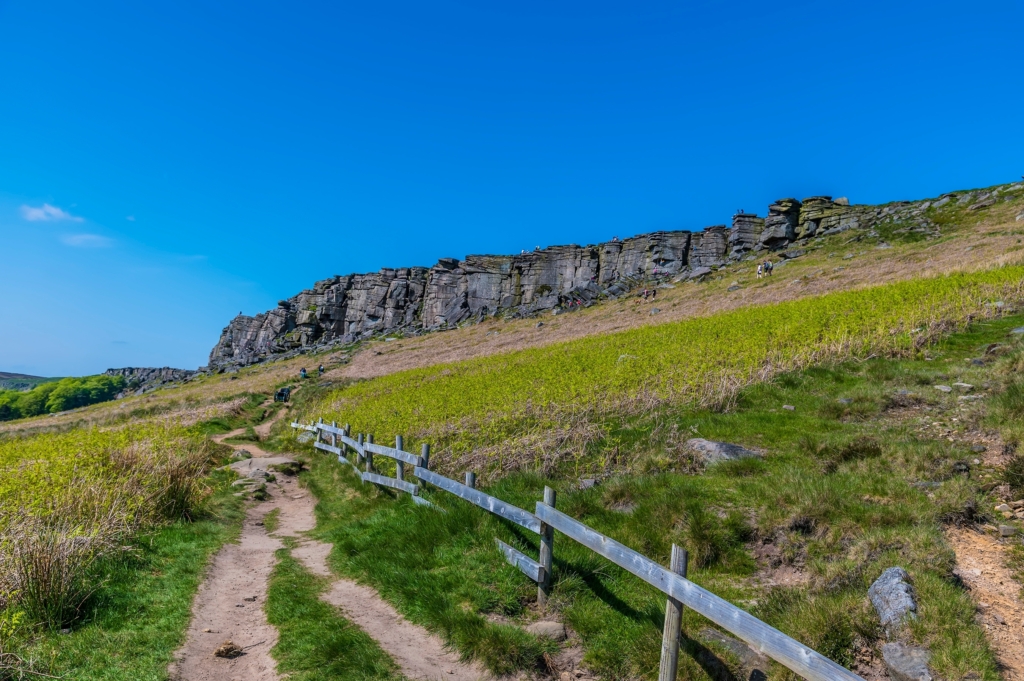
The Hope Pilgrimage runs for 29 miles (48km) through the Peak District National Park from Edale to Eyam. The route was devised by Eyam Parish Church and opened in May 2021. This walk can be completed over 2 to 3 days. Edale is the start point for the Pennine Way but this pilgrimage heads in the opposite direction past Castleton with its long history of lead mining and its numerous caverns. The walk passes through the beautiful hills and valleys of the Dark Peak to the north and White Peak to the south. Eyam is noted for having imposed a quarantine in 1666 to prevent the spread of the plague to the surrounding area. This walk is of moderate difficulty and can be completed over 2 to 3 days.
St Edmund Way
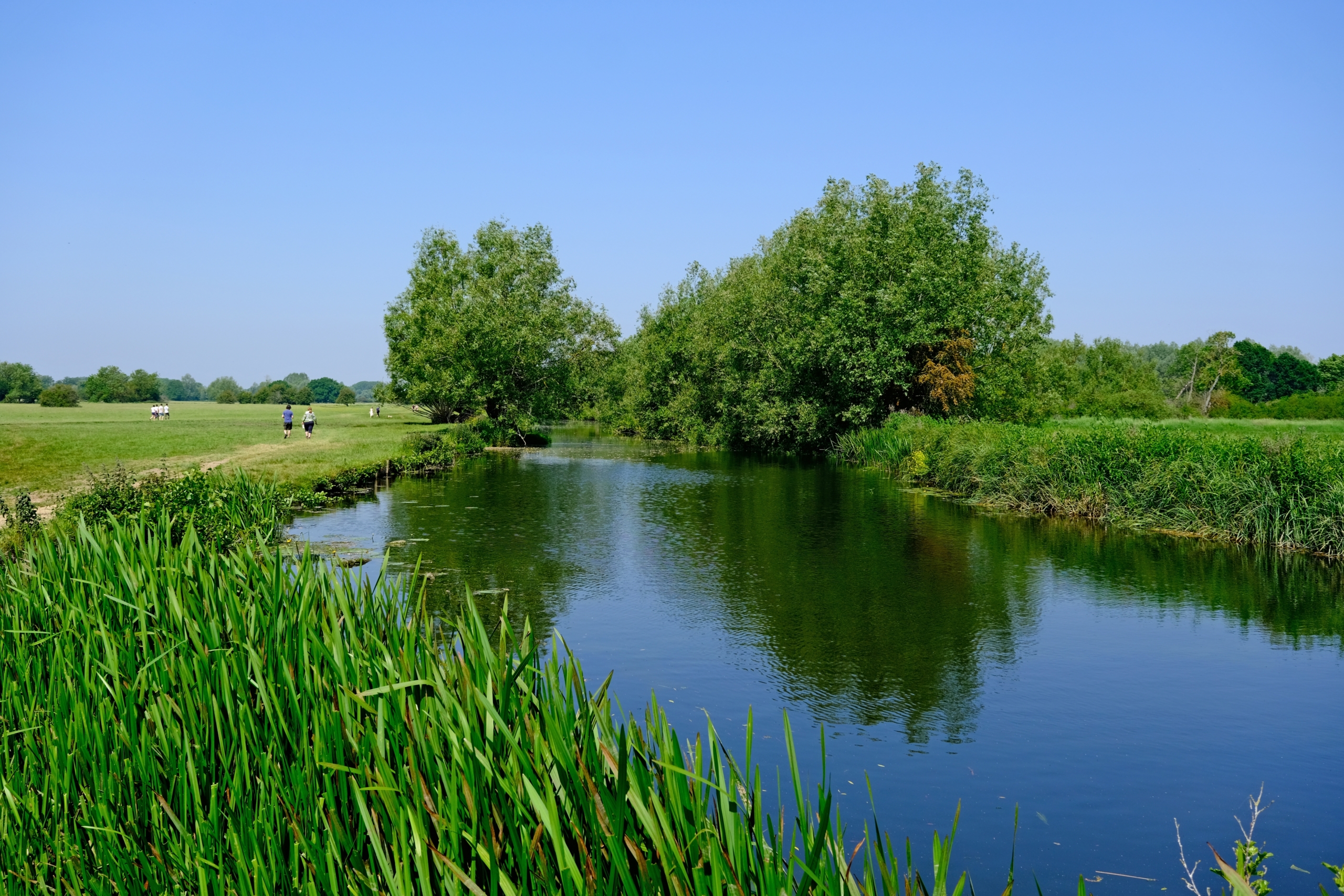
St Edmund (or Edmund the Martyr) was a Saxon king of East Anglia who was put to death by the Vikings in the 9th century for refusing to renounce his Christian faith. He became the original patron saint of England, before being replaced by Edward the Confessor. This 80-mile (129km) pilgrimage starts at Manningtree in Essex, passes through Constable country around Flatford Mill before crossing into Suffolk. It then follows the River Stour valley path to Bury St Edmunds where the saint was buried, before following the River Lark to the forests around Thetford and the finish at Brandon. The going is easy, and the walk can be completed over 6 to 7 days.
The Archangel’s Way
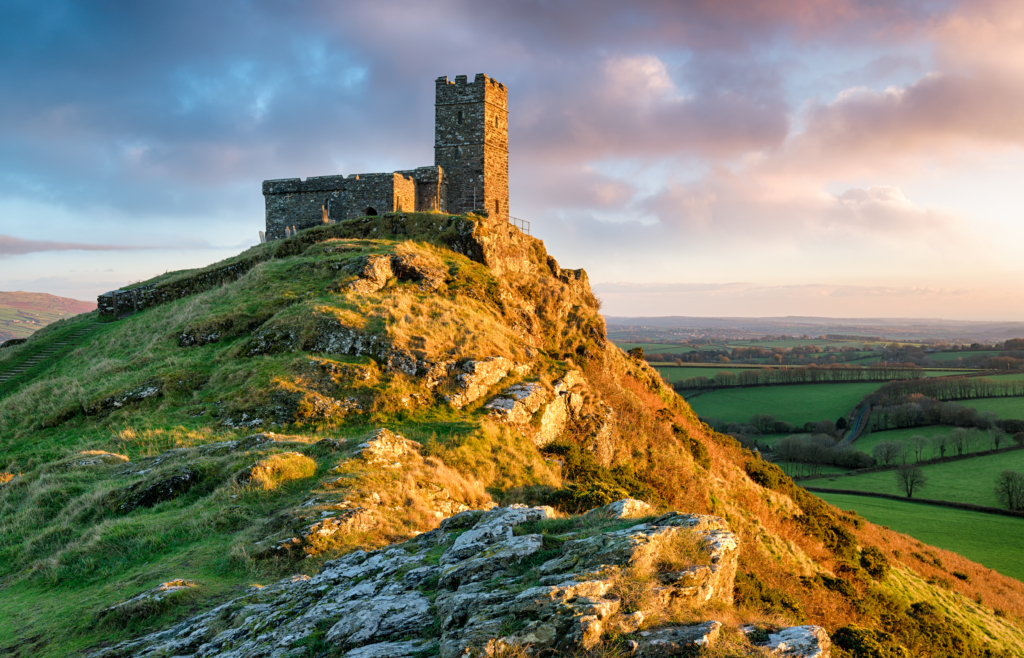
The Archangel’s Way was launched in 2021 as part of the Devon Pilgrim Project under the auspices of the Diocese of Exeter. This pilgrimage route offers two options: an easier Low route of 30 miles, and a more challenging Moorland route of 38 miles (61km). Both routes visit 12 of Devon’s oldest churches across the northern edge of Dartmoor National Park, starting at Brentor and finishing in Chagford. This walk takes in a variety of landscapes including moorland, rocky outcrops known as tors, and wooded valleys. The Low route can be completed in 2 to 3 days, with the Moorland route taking 3 to 4 days.
St Alban’s Way
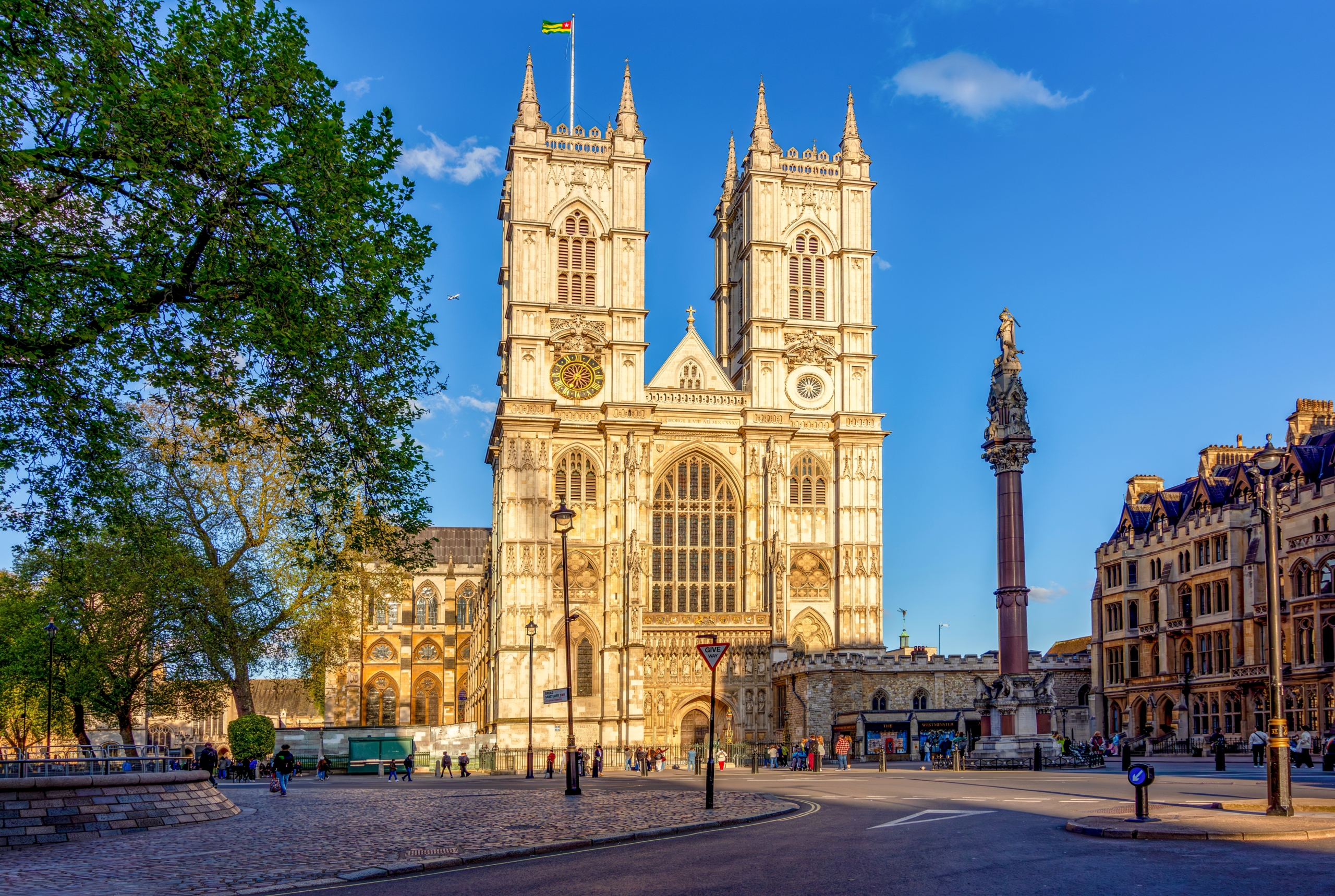
Launched by St Alban’s Cathedral in 2019, this 35-mile (56km) pilgrimage takes in a mixture of historic landmarks and outstanding countryside. The route starts at St Paul’s Cathedral in London and finishes at St Alban’s Cathedral in Hertfordshire. Along the way it passes Westminster Abbey, the Royal Parks, Paddington Basin, Regent’s Canal, Primrose Hill, Hampstead Heath and Parliament Hill, before heading through the outer fringes of London into the Hertfordshire countryside and on to the historic city of St Albans. This walk is easy and can be completed over 3 days.
Fife Pilgrim Way

Launched in 2019, the Fife Pilgrim Way runs for 64 miles (103km) from either Culross or North Queensway on the shores of the Firth of Forth to St Andrews on the North Sea coast. It follows the route that Medieval pilgrims would have taken across the ancient Kingdom of Fife to reach St Andrews Cathedral. Although the Cathedral is now a picturesque ruin, it was the largest church ever built in Scotland. As well as historic ecclesiastical buildings, this pilgrimage has other wonders both ancient and modern, ranging from Neolithic stone circles to the Forth Bridge classified as an UNESCO World Heritage Site. The going is easy, and the pilgrimage can be completed over 5 or 6 days.
St Akelda’s Way
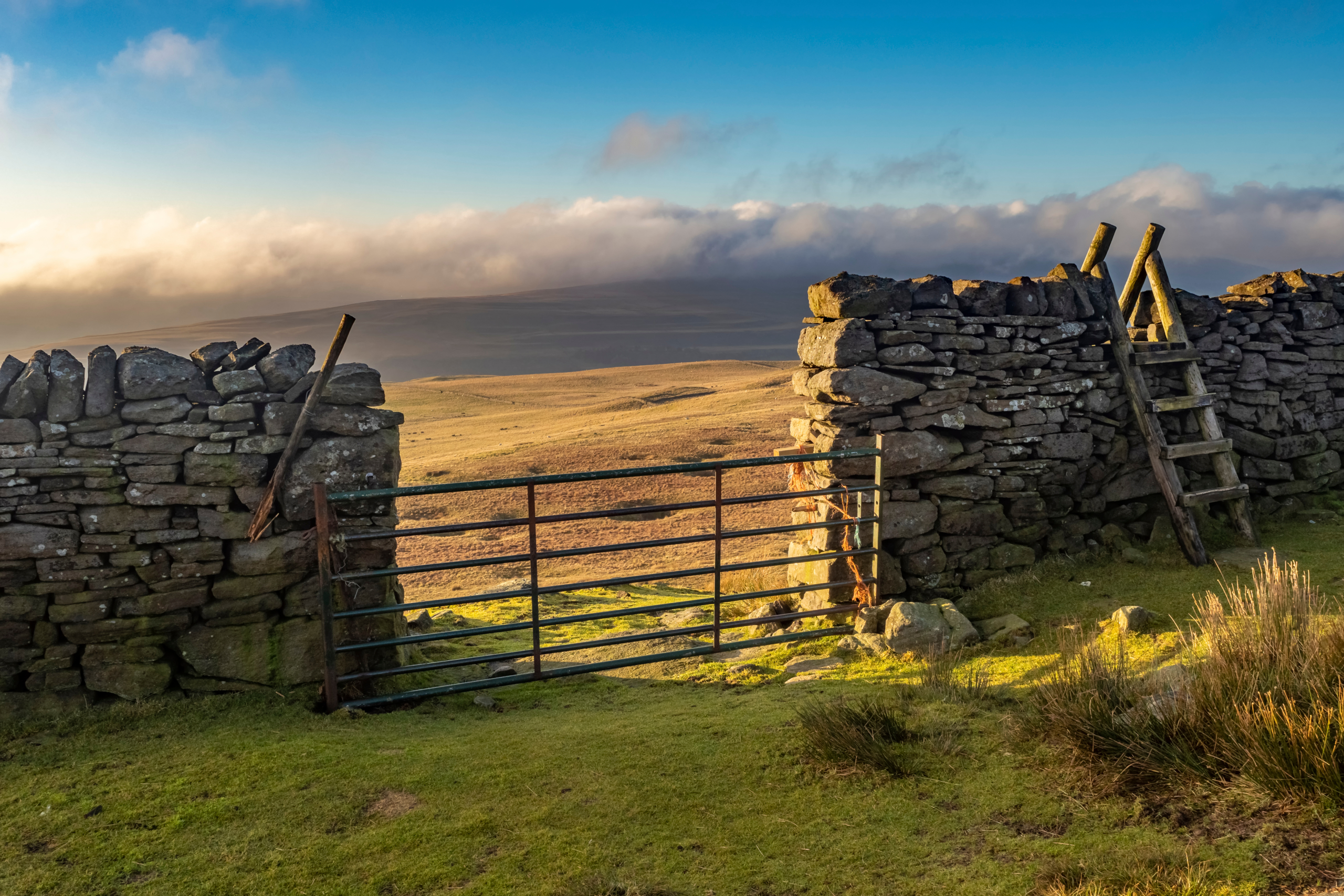
St Akelda’s Way passes through the spectacular Yorkshire Dales National Park. This 33-mile (53km) pilgrimage was conceived by Kathleen Kinder and follows a Roman pathway between Giggleswick in Ribblesdale to Middleham in Wensleydale. There are churches at both ends of the path dedicated to St Akelda. Akelda was regarded as a “saintly lady” who lived in the late 9th century/early 10th century before being martyred by the invading Danes. This walk is of moderate difficulty (occasionally challenging) and can be completed over 3 to 4 days.
Get in touch
Ready to lace up your boots and walk a pilgrimage? Contact Walk With Williams today


